April 2024
Annual Drinking Water Quality Report for 2023
Village of Montgomery Water System
133 Clinton Street, Montgomery, NY
(Federal ID 3503542)
Testing of our water supply system is done to be sure the drinking water that the Village of Montgomery delivers to your home or business remains safe.
The NYS DOH has completed a source water assessment for this system based on available information. Possible and actual threats to the drinking water source were evaluated. The State source water assessment includes a susceptibility rating based on the risk posed by each potential source of contamination and how easily contaminants can move through the subsurface to the wells. The susceptibility rating is an estimate of the potential for contamination of the source water, it does not mean that the water delivered to consumers is or will become contaminated. See “Table of Detected Contaminants” for a list of the contaminants that have been detected. The source water assessments provide resource managers with additional information for protecting source waters into the future.
As mentioned before, our water is derived from seven drilled wells. The source water assessment has rated these wells as having a medium to high susceptibility to microbials, nitrates, industrial solvents, and other industrial contaminants. These ratings are due primarily to the close proximity of a SPDES permitted discharge facility (industrial/commercial facilities that discharge wastewater into the environment and are regulated by the state and/federal government), the low-level residential activity and the pasture that is located in the assessment area. In addition, the wells draw from fractured bedrock and various aquifers and the overlying soils may not provide adequate protection from potential contamination. While the source water assessment rates our wells as being susceptible to microbials, please note that our water is disinfected to ensure that the finished water delivered into your home meets New York State’s drinking water standards for microbial contamination. A copy of the assessment, including a map of the assessment area, can be obtained by contacting us, as noted in this report.
To comply with State and Federal regulations, the Village of Montgomery will be annually issuing a report describing the quality of your drinking water. The purpose of this report is to raise your understanding of drinking water and awareness of the need to protect our drinking water sources. Last year, your tap water met all state drinking water health standards. This report provides an overview of last year’s water quality. Included are details about where your water comes from, what it contains, and how it compares to State standards.
If you have any questions about this report or concerning your drinking water, please contact Department of Public Works Superintendent Ralph Nelson at (845) 457‑5321. We want you to be informed about your drinking water. If you want to learn more, please attend any of our regularly scheduled Village Board meetings. The meetings are held the 1st and 3rd Tuesday of each month at 133 Clinton St., Montgomery, NY.
Where does our water come from?
In general, the sources of drinking water (both tap water and bottled water) include rivers, lakes, streams, ponds, reservoirs, springs, and wells. As water travels over the surface of the land or through the ground, it dissolves naturally‑occurring minerals and can pick up substances resulting from the presence of animals or from human activities. Contaminants that may be present in source water include: microbial contaminants; inorganic contaminants; pesticides and herbicides; organic chemical contaminants; and radioactive contaminants. In order to ensure that tap water is safe to drink, the State and the EPA prescribe regulations which limit the amount of certain contaminants in water provided by public water systems. The State Health Department's and the FDA's regulations establish limits for contaminants in bottled water which must provide the same protection for public health.
Facts and Figures:
Our water system serves approx. 4,600 people thru approx. 1,400 service connections. The total water produced in 2023 was 85,464,000 gallons. The daily average of water treated and pumped into the distribution system was 234,000 gallons per day. Our highest single day was approx. 334,000 gallons. The amount of water delivered to customers was 74,847,829 gallons. This leaves an unaccounted for total of 10,616,171 gallons in 2023. This water was used to flush mains, fight fires, and was lost to water main breaks. Water customers were charged $3.85 per 1,000 gallons through 49,999 gallons and $4.45 per 1,000 gallons for 50,000 gallons and above. Minimum charge for water is $15.40.
It should be noted that all drinking water, including bottled drinking water, may be reasonably expected to contain at least small amounts of some contaminants. The presence of contaminants does not necessarily indicate that water poses a health risk. More information about contaminants and potential health effects can be obtained by calling the EPA's Safe Drinking Water Hotline (800‑426‑4791) or the Orange County Health Department at 291‑2331.
Are there contaminants in our drinking water?
As the State regulations require, we routinely test your drinking water for numerous contaminants. These contaminants include: total coliform, inorganic compounds, nitrate, nitrite, lead and copper, volatile organic compounds, and synthetic organic compounds and PFOS/PFOA. The table below depicts which compounds were detected in your drinking water. The State allows us to test for some contaminants less than once per year because the concentrations of these contaminants do not change frequently. Some of our data though representative, are more than one year old. Some of the compounds we analyzed for were detected in your drinking water but below Health Dept. standards.
Some people may be more vulnerable to disease causing microorganisms or pathogens in drinking water than the general population. Immune-compromised persons, such as persons with cancer undergoing chemotherapy, persons who have undergone organ transplants, people with HIV/AIDS or other immune system disorders, some elderly, and infants can be particularly at risk from infections. These people should seek advice from their health care provider about their drinking water. EPA/CDC guidelines on appropriate means to lessen the risk of infection by Cryptosporidium, Giardia and other microbial pathogens are available from the Safe Drinking Water Hotline (800-426-4791).
| Table of Detected Contaminants 2023 | |||||||
|
Contaminant |
Violation Yes/No |
Date Of Sample |
Level Detected |
Unit of Measure |
MCLG |
Regulatory Limit (MCL-TT or AL) |
Likely Source of Contamination |
|
Lead4 |
No |
June/Sept 2023 |
90th = 5.1 / 6.6 |
ug/l |
0 |
AL = 15 |
Corrosion of household plumbing systems |
|
|
|
|
Range = ND-7.4 / ND – 8.5 |
|
|
|
|
|
Copper3 |
No |
June/Sept 2023 |
90th = 0.61 / 0.42 |
mg/l |
1.3 |
AL = 1.3 |
Corrosion of household plumbing systems |
|
|
|
|
Range = ND-2.3 / 0.01 – 2.0 |
|
|
|
|
|
Nitrate |
No |
September 7, 2023 |
average = 1.89 |
mg/l |
10 mg/l |
10 mg/l |
Run-off from fertilizer use |
|
|
|
|
range= 0.6-4.4 |
|
|
|
|
|
Total Trihalomethanes |
No |
Feb/May/Sept/Nov 2023 |
Average = 36 |
ug/l |
N/A |
80 ug/l |
By-product of drinking water chlorination needed to kill harmful organisms. TTHs are formed when source water contains large amounts organic matter. |
|
|
|
range = 20 - 63 |
|
|
See Note 2 |
|
|
|
Haloacetic Acid |
No |
Feb/May/Sept/Nov 2023 |
Average = 18 |
ug/l |
N/A |
60 ug/l |
Formed when source water contains large amounts of organic matter |
|
|
|
|
Range = 14 – 23 |
|
|
See Note 2 |
|
|
Perflurooctanoic Acid (PFOA)5 |
No |
October 31, 2023 |
Average = 1 |
ng/l |
N/A |
10 |
Released into the environment from widespread use in commercial and industrial applications |
|
|
|
Range = ND – 2.9 |
|
|
|
|
|
|
1,4-Dioxane |
No |
October 31, 2023 |
Average = .007 |
ug/l |
0 |
0 |
Comes from leaking underground storage tanks, discharges from manufacturing plants, personal care products, laundry detergents and dish soaps. |
|
|
Range = ND - .022 |
|
|
||||
|
|
|
|
|
||||
|
|
|
|
|
|
|
|
|
|
Sodium |
No |
September 7, 2023 |
Average = 57 |
mg/L |
N/A |
See Note 1 |
Road Salt |
|
|
|
|
Range = 28 - 76 |
|
|
|
|
|
Chloroform |
No |
September 19, 2023 |
Average = 0.21 |
ug/l |
N/A |
N/A |
Chloroform is a man-made by-product formed when chlorine is used to disinfect water |
|
|
|
Range = ND - 0.64 |
|
|
|||
|
|
|
|
|
|
|
|
|
|
Barium |
No |
April 21, 2021 |
Average = 83 |
ug/l |
2000 |
MCL= 2000 |
Chloroform is a man-made by-product formed when chlorine is used to disinfect water |
|
|
|
September 7, 2021 |
Range = 30 – 150 |
|
|
||
|
|
|
|
|
|
|
|
|
|
Nickel |
No |
April 21, 2021 |
Average = 2.6 |
ug/l |
100 |
MCL = 100 |
Chloroform is a man-made by-product formed when chlorine is used to disinfect water |
Note 1: Water containing more than 20 mg/l of sodium should not be used for drinking by people on severely restricted sodium diets. Water containing more than 270 mg/l of sodium should not be used for drinking by people on moderately restricted diets.
Note 2: TTHMs and HAA5s: Due to the high result, the system is required to perform testing at an increased frequency of quarterly. These values as indicated, represent the highest Locational Running Annual Average for 2023 and show the range of all individual samples collected throughout the year.
Note 3 – The level presented represents the 90th percentile of the 20 sites tested during the first half of 2023 and the 20 sites tested during the second half of 2023. A percentile is a value on a scale of 100 that indicates the percent of a distribution that is equal to or below it. The 90th percentile is equal to or greater than 90% of the copper values detected at your water system. In this case, 20 samples were collected at your water system and the 90th percentile value was the third highest value. The action level for copper was exceeded at two of the 40 sites tested.
Note 4 – The level presented represents the 90th percentile of the 20 samples collected. The action level for lead was not exceeded at any of the sites tested.
Note 5 - Please note that in addition to PFOA, the lab ran the analysis for the entire EPA method 537.1, which includes 16 additional perfluorinated chemicals, 2 of these additional chemicals were detected, both PFHXA and PFBS were 2.1 ng/l. These additional analytes are not currently regulated and do not have an MCL.
Maximum Residual Disinfectant Level (MDRL) : The highest level of a disinfectant allowed in drinking water. There is convincing evidence that addition of a disinfectant is necessary for control of microbial contaminants.
Maximum Residual Disinfectant Level Goal (MRDLG): The level of a drinking water disinfectant below which there is no known or expected risk. MRDLGs do not reflect the benefits of the use of disinfectants to control microbial contamination.
Maximum Contaminant Level (MCL): The highest level of a contaminant that is allowed in drinking water. MCLs are set as close to the MCLGs as feasible.
Maximum Contaminant Level Goal (MCLG): The level of a contaminant in drinking water below which there is no known or expected risk to health. MCLGs allow for a margin of safety.
Action Level (AL): The concentration of a contaminant which, if exceeded, triggers treatment or other requirements which a water system must follow.
Non-Detects (ND): Laboratory analysis indicated that the constituent is not present.
Milligrams per liter (mg/l): Corresponds to one part of liquid in one million parts of liquid (parts per million - ppm).
Micrograms per liter (ug/l): Corresponds to one part of liquid in one billion parts of liquid (parts per billion - ppb).
Nanograms per liter (ng/l): Corresponds to one part of liquid to one trillion parts of liquid (parts per trillion - ppt
Picocuries per liter (pCi/L): A measure of the radioactivity in water.
WHAT DOES THIS INFORMATION MEAN?
As you can see by the table, our system had no violations. We have learned through our testing that some contaminants have been detected; however, these contaminants were detected below New York State requirements.
IS OUR WATER SYSTEM MEETING OTHER RULES THAT GOVERN OPERATIONS?
During 2023, our system was in compliance with applicable State drinking water operating, monitoring and reporting requirements.
WHY SAVE WATER AND HOW TO AVOID WASTING IT?
Although our system has an adequate amount of water to meet present demands, there are a number of reasons why it is important to conserve water:
¨ Saving water saves energy and some of the costs associated with both of these necessities of life;
¨ Saving water reduces the cost of energy required to pump water and the need to construct costly new wells, pumping systems and water towers; and
¨ Saving water lessens the strain on the water system during a dry spell or drought, helping to avoid severe water use restrictions so that essential firefighting needs are met.
You can play a role in conserving water by becoming conscious of the amount of water your household is using, and by looking for ways to use less whenever you can. It is not hard to conserve water. Conservation tips include:
¨ Automatic dishwashers use 15 gallons for every cycle, regardless of how many dishes are loaded. So get a run for your money and load it to capacity.
¨ Turn off the tap when brushing your teeth.
¨ Check every faucet in your home for leaks. Just a slow drip can waste 15 to 20 gallons a day. Fix it and you can save almost 6,000 gallons per year.
¨ Check your toilets for leaks by putting a few drops of food coloring in the tank, watch for a few minutes to see if the color shows up in the bowl. It is not uncommon to lose up to 100 gallons a day from one of these otherwise invisible toilet leaks. Fix it and you save more than 30,000 gallons a year.
¨ Use your water meter to detect hidden leaks. Simply turn off all taps and water using appliances, then check the meter after 15 minutes. If it moved, you have a leak.
CLOSING
Thank you for allowing us to continue to provide your family with quality drinking water this year. We ask that all our customers help us protect our water sources, which are the heart of our community. Please call our office if you have questions.
Ralph Nelson
Superintendent of Public Works
Annual Drinking Water Quality Report for 2022
Village of Montgomery Water System
133 Clinton Street, Montgomery, NY
(Federal ID 3503542)
Testing of our water supply system is done to be sure the drinking water that the Village of Montgomery delivers to your home or business remains safe.
The NYS DOH has completed a source water assessment for this system based on available information. Possible and actual threats to the drinking water source were evaluated. The State source water assessment includes a susceptibility rating based on the risk posed by each potential source of contamination and how easily contaminants can move through the subsurface to the wells. The susceptibility rating is an estimate of the potential for contamination of the source water, it does not mean that the water delivered to consumers is or will become contaminated. See “Table of Detected Contaminants” for a list of the contaminants that have been detected. The source water assessments provide resource managers with additional information for protecting source waters into the future.
As mentioned before, our water is derived from seven drilled wells. The source water assessment has rated these wells as having a medium to high susceptibility to microbials, nitrates, industrial solvents, and other industrial contaminants. These ratings are due primarily to the close proximity of a SPDES permitted discharge facility (industrial/commercial facilities that discharge wastewater into the environment and are regulated by the state and/federal government), the low-level residential activity and the pasture that is located in the assessment area. In addition, the wells draw from fractured bedrock and various aquifers and the overlying soils may not provide adequate protection from potential contamination. While the source water assessment rates our wells as being susceptible to microbials, please note that our water is disinfected to ensure that the finished water delivered into your home meets New York State’s drinking water standards for microbial contamination. A copy of the assessment, including a map of the assessment area, can be obtained by contacting us, as noted in this report.
To comply with State and Federal regulations, the Village of Montgomery will be annually issuing a report describing the quality of your drinking water. The purpose of this report is to raise your understanding of drinking water and awareness of the need to protect our drinking water sources. Last year, your tap water met all state drinking water health standards. This report provides an overview of last year’s water quality. Included are details about where your water comes from, what it contains, and how it compares to State standards.
If you have any questions about this report or concerning your drinking water, please contact Department of Public Works Superintendent Ralph Nelson at (845)457-5321. We want you to be informed about your drinking water. ‑If you want to learn more, please attend any of our regularly scheduled Village Board meetings. The meetings are held the 1st and 3rd Tuesday of each month at 133 Clinton St., Montgomery, NY.
Where does our water come from?
In general, the sources of drinking water (both tap water and bottled water) include rivers, lakes, streams, ponds, reservoirs, springs, and wells. As water travels over the surface of the land or through the ground, it dissolves naturally occurring minerals and can pick up substances resulting from the presence of animals or from human activities. Contaminants that may be present in source water include: microbial contaminants; inorganic contaminants; pesticides and herbicides; organic chemical contaminants; and radioactive contaminants. In order to ensure that tap water is safe to drink, the State and the EPA prescribe regulations which limit the amount of certain contaminants in water provided by public water systems. The State Health Department's and the FDA's regulations establish limits for contaminants in bottled water which must provide‑ the same protection for public health.
Facts and Figures:
Our water system serves approx. 4,600 people thru approx. 1,400 service connections. The total water produced in 2022 was 87,120,000 gallons. The daily average of water treated and pumped into the distribution system was 238,000 gallons per day. Our highest single day was approx. 336,000 gallons. The amount of water delivered to customers was 77,472,739 gallons. This leaves an unaccounted for total of 9,647,261 gallons in 2022. This water was used to flush mains, fight fires, and was lost to water main breaks. Water customers were charged $3.85 per 1,000 gallons through 49,999 gallons and $4.45 per 1,000 gallons for 50,000 gallons and above. Minimum charge for water is $15.40.
It should be noted that all drinking water, including bottled drinking water, may be reasonably expected to contain at least small amounts of some contaminants. The presence of contaminants does not necessarily indicate that water poses a health risk. More information about contaminants and potential health effects can be obtained by calling the EPA's Safe Drinking Water Hotline (800‑426‑4791) or the Orange County Health Department at 291‑2331.
Are there contaminants in our drinking water?
As the State regulations require, we routinely test your drinking water for numerous contaminants. These contaminants include: total coliform, inorganic compounds, nitrate, nitrite, lead and copper, volatile organic compounds, and synthetic organic compounds and PFOS/PFOA. The table below depicts which compounds were detected in your drinking water. The State allows us to test for some contaminants less than once per year because the concentrations of these contaminants do not change frequently. Some of our data though representative, are more than one year old. Some of the compounds we analyzed for were detected in your drinking water but below Health Dept. standards.
Some people may be more vulnerable to disease causing microorganisms or pathogens in drinking water than the general population. Immune-compromised persons, such as persons with cancer undergoing chemotherapy, persons who have undergone organ transplants, people with HIV/AIDS or other immune system disorders, some elderly, and infants can be particularly at risk from infections. These people should seek advice from their health care provider about their drinking water. EPA/CDC guidelines on appropriate means to lessen the risk of infection by Cryptosporidium, Giardia and other microbial pathogens are available from the Safe Drinking Water Hotline (800-426-4791).
Below is a table of detected contaminants.
Maximum Residual Disinfectant Level (MDRL) : The highest level of a disinfectant allowed in drinking water. There is convincing evidence that addition of a disinfectant is necessary for control of microbial contaminants.
Maximum Residual Disinfectant Level Goal (MRDLG): The level of a drinking water disinfectant below which there is no known or expected risk. MRDLGs do not reflect the benefits of the use of disinfectants to control microbial contamination.
Maximum Contaminant Level (MCL): The highest level of a contaminant that is allowed in drinking water. MCLs are set as close to the MCLGs as feasible.
Maximum Contaminant Level Goal (MCLG): The level of a contaminant in drinking water below which there is no known or expected risk to health. MCLGs allow for a margin of safety.
Action Level (AL): The concentration of a contaminant which, if exceeded, triggers treatment or other requirements which a water system must follow.
Non-Detects (ND): Laboratory analysis indicated that the constituent is not present.
Milligrams per liter (mg/l): Corresponds to one part of liquid in one million parts of liquid (parts per million - ppm).
Micrograms per liter (ug/l): Corresponds to one part of liquid in one billion parts of liquid (parts per billion - ppb).
Nanograms per liter (ng/l): Corresponds to one part of liquid to one trillion parts of liquid (parts per trillion - ppt
Picocuries per liter (pCi/L): A measure of the radioactivity in water.
|
Table of Detected Contaminants |
|||||||
|
Contaminant |
Violation Yes/No |
Date Of Sample |
Level Detected |
Unit of Measure |
MCLG |
Regulatory Limit (MCL-TT or AL) |
Likely Source of Contamination |
|
Lead |
No |
August 2022 |
90th = 15.1 |
ug/l |
0 |
AL = 15 |
Corrosion of household plumbing systems; |
|
Range = 1 - 39 |
|||||||
|
Copper |
No |
August 2022 |
90th = 0.34 |
mg/l |
1.3 |
AL = 1.3 |
Corrosion of household |
|
Range = .064 - .620 |
|||||||
|
Nitrate |
No |
October 14, 2022 |
average = 0.99 |
mg/l |
10 mg/l |
10 mg/l |
Runoff from fertilizer use; |
|
range= 0.26 - 2.1 |
|||||||
|
Total Trihalomethanes |
No |
August/November 2022 |
Average = 66 |
ug/l |
N/A |
80 ug/l See Note 2 |
By-product of drinking water chlorination needed to kill harmful organisms. TTHs are formed when source water contains organic matter. |
|
Haloacetic Acid |
No |
August/November 2022 |
Average = 26.8 |
ug/l |
N/A |
60 ug/l See Note 2 |
By-product of drinking water |
|
Nickel |
No |
Sept 7, 2021 |
Average = 2.57 |
ug/l |
N/A |
100 |
Naturally occurring |
|
Range = 1.9 – 3.9 |
|||||||
|
Barium |
No |
Sept 7, 2021 |
Average = 83 |
ug/l |
2,000 |
2,000 |
Discharge of drilling wastes |
|
Range = 30-150 |
|||||||
|
Combined |
No |
July/Sept 2022 |
Average = 0.801 |
pci/L |
0 |
5 |
Erosion of natural deposits |
|
Range = 0.656 - 0.953 |
|||||||
|
Sodium |
No |
November 18, 2022 |
Average = 62 |
mg/L |
N/A |
See Note 1 |
Naturally occurring; Road salt; Water softeners; Animal waste. |
|
Range = 33 - 83 |
|||||||
|
1,4-Dioxane |
No |
November 15, 2022 |
0.022 |
ug/l |
0 |
0 |
Released into the environment from commercial and industrial sources and is associated with inactive and hazardous waste sites. |
Note 1: Water containing more than 20 mg/l of sodium should not be used for drinking by people on severely restricted sodium diets. Water containing more than 270 mg/l of sodium should not be used for drinking by people on moderately restricted diets.
Note 2: TTHMs and HAA5s: Due to the high result, the system is required to perform testing at an increased frequency of quarterly. These values as indicated, represent the highest Locational Running Annual Average for 2022 and show the range of all individual samples collected throughout the year.
Note 3: Copper:
The level presented represents the 90th percentile of the twenty sites tested. A percentile is a value on a scale of 100 that that indicates the percentage of a distribution system that is equal to or below it. The 90th percentile is equal to or greater than 90% of the copper values detected at your water system. In this case, twenty samples were collected at your water system and the 90th percentile value was the third highest sample taken, which was 0.34 mg/l. The action level for copper was not exceeded at any of the sites tested.
Note 4: Lead;
The level presented represents the 90th percentile of the twenty sites tested. A percentile is a value on a scale of 100 that indicates the percent of a distribution that is equal to or below it. The 90th percentile is equal to or greater than 90% of the lead values detected at your water system. In this case, nineteen samples were collected at your water system and the 90th percentile value was interpolated from the second and third highest sample taken, which was 15.1 ug/l. The action level for lead was exceeded at three of our test sites.
WHAT DOES THIS INFORMATION MEAN?
As you can see by the table, our system had no violations. We have learned through our testing that some contaminants have been detected; however, these contaminants were detected below New York State requirements. It should be noted that the action level for lead was exceeded at three sample sites. We are required to present the following information on lead in drinking water:
The action level for lead was exceeded at three of our test sites. If present, elevated levels of lead can cause serious health problems. Infants and children who drink water containing lead in excess of the action level could experience delays in their physical or mental development. Children could show slight deficits in attention span and learning abilities. Adults who drink this water over many years could develop kidney problems or high blood pressure. It is possible that lead levels at your home may be higher than at other homes in the community as a result of materials used in your home’s plumbing. The Village of Montgomery is responsible for providing high quality drinking water but cannot control the variety of materials used in plumbing components. When your water has been sitting for several hours, you can minimize the potential for lead exposure by flushing your tap for 30 seconds to 2 minutes before using water for drinking or cooking. If you are concerned about lead in your water, you may wish to have your water tested. Information on lead in drinking water, testing methods, and steps you can take to minimize exposure is available from the Safe Drinking Water Hotline (1-800-426-4791) or at http://www.epa.gov/safewater/lead.
WHY SAVE WATER AND HOW TO AVOID WASTING IT?
Although our system has an adequate amount of water to meet present demands, there are a number of reasons why it is important to conserve water:
¨ Saving water saves energy and some of the costs associated with both of these necessities of life;
¨ Saving water reduces the cost of energy required to pump water and the need to construct costly new wells, pumping systems and water towers; and
¨ Saving water lessens the strain on the water system during a dry spell or drought, helping to avoid severe water use restrictions so that essential firefighting needs are met.
You can play a role in conserving water by becoming conscious of the amount of water your household is using, and by looking for ways to use less whenever you can. It is not hard to conserve water. Conservation tips include:
¨ Automatic dishwashers use 15 gallons for every cycle, regardless of how many dishes are loaded. So get a run for your money and load it to capacity.
¨ Turn off the tap when brushing your teeth.
¨ Check every faucet in your home for leaks. Just a slow drip can waste 15 to 20 gallons a day. Fix it and you can save almost 6,000 gallons per year.
¨ Check your toilets for leaks by putting a few drops of food coloring in the tank, watch for a few minutes to see if the color shows up in the bowl. It is not uncommon to lose up to 100 gallons a day from one of these otherwise invisible toilet leaks. Fix it and you save more than 30,000 gallons a year.
¨ Use your water meter to detect hidden leaks. Simply turn off all taps and water using appliances, then check the meter after 15 minutes. If it moved, you have a leak.
CLOSING
Thank you for allowing us to continue to provide your family with quality drinking water this year. We ask that all our customers help us protect our water sources, which are the heart of our community. Please call our office if you have questions.
Ralph Nelson
Superintendent of Public Works
Annual Drinking Water Quality Report for 2021
Village of Montgomery Water System
133 Clinton Street, Montgomery, NY
(Federal ID 3503542)
Testing of our water supply system is done to be sure the drinking water that the Village of Montgomery delivers to your home or business remains safe.
The NYS DOH has completed a source water assessment for this system based on available information. Possible and actual threats to the drinking water source were evaluated. The state source water assessment includes a susceptibility rating based on the risk posed by each potential source of contamination and how easily contaminants can move through the subsurface to the wells. The susceptibility rating is an estimate of the potential for contamination of the source water, it does not mean that the water delivered to consumers is or will become contaminated. See “Table of Detected Contaminants” for a list of the contaminants that have been detected. The source water assessments provide resource managers with additional information for protecting source waters into the future.
As mentioned before, our water is derived from seven drilled wells. The source water assessment has rated these wells as having a medium to high susceptibility to microbials, nitrates, industrial solvents, and other industrial contaminants. These ratings are due primarily to the close proximity of a SPDES permitted discharge facility (industrial/commercial facilities that discharge wastewater into the environment and are regulated by the state and/federal government), the low-level residential activity and the pasture that is located in the assessment area. In addition, the wells draw from fractured bedrock and various aquifers and the overlying soils may not provide adequate protection from potential contamination. While the source water assessment rates our wells as being susceptible to microbials, please note that our water is disinfected to ensure that the finished water delivered into your home meets New York State’s drinking water standards for microbial contamination. A copy of the assessment, including a map of the assessment area, can be obtained by contacting us, as noted in this report.
To comply with State and Federal regulations, the Village of Montgomery will be annually issuing a report describing the quality of your drinking water. The purpose of this report is to raise your understanding of drinking water and awareness of the need to protect our drinking water sources. Last year, your tap water met all state drinking water health standards. This report provides an overview of last year’s water quality. Included are details about where your water comes from, what it contains, and how it compares to State standards.If you have any questions about this report or concerning your drinking water, please contact Department of Public Works Superintendent Ralph Nelson at 457‑5321. We want you to be informed about your drinking water. If you want to learn more, please attend any of our regularly scheduled Village Board meetings. The meetings are held the 1st and 3rd Tuesday of each month at 133 Clinton St., Montgomery, NY.
Where does our water come from?
In general, the sources of drinking water (both tap water and bottled water) include rivers, lakes, streams, ponds, reservoirs, springs, and wells. As water travels over the surface of the land or through the ground, it dissolves naturally‑occurring minerals and can pick up substances resulting from the presence of animals or from human activities. Contaminants that may be present in source water include: microbial contaminants; inorganic contaminants; pesticides and herbicides; organic chemical contaminants; and radioactive contaminants. In order to ensure that tap water is safe to drink, the State and the EPA prescribe regulations which limit the amount of certain contaminants in water provided by public water systems. The State Health Department's and the FDA's regulations establish limits for contaminants in bottled water which must provide the same protection for public health.
Facts and Figures:
Our water system serves approx. 3,800 people thru approx. 1,400 service connections. The total water produced in 2021 was 92,787,000 gallons. The daily average of water treated and pumped into the distribution system was 254,000 gallons per day. Our highest single day was approx. 390,000 gallons. The amount of water delivered to customers was 74,634,000 gallons. This leaves an unaccounted for total of 18,153,000 gallons in 2021. This water was used to flush mains, fight fires, and was lost to water main breaks. Water customers were charged $3.85 per 1,000 gallons through 49,999 gallons and $4.45 per 1,000 gallons for 50,000 gallons and above. Minimum charge for water is $15.40.
It should be noted that all drinking water, including bottled drinking water, may be reasonably expected to contain at least small amounts of some contaminants. The presence of contaminants does not necessarily indicate that water poses a health risk. More information about contaminants and potential health effects can be obtained by calling the EPA's Safe Drinking Water Hotline (800‑426‑4791) or the Orange County Health Department at 291‑2331.
Are there contaminants in our drinking water?
As the State regulations require, we routinely test your drinking water for numerous contaminants. These contaminants include: total coliform, inorganic compounds, nitrate, nitrite, lead and copper, volatile organic compounds, asbestos and synthetic organic compounds. The table below depicts which compounds were detected in your drinking water. The State allows us to test for some contaminants less than once per year because the concentrations of these contaminants do not change frequently. Some of our data though representative, are more than one year old. Some of the compounds we analyzed for were detected in your drinking water but below Health Dept. standards.
Some people may be more vulnerable to disease causing microorganisms or pathogens in drinking water than the general population. Immune-compromised persons, such as persons with cancer undergoing chemotherapy, persons who have undergone organ transplants, people with HIV/AIDS or other immune system disorders, some elderly, and infants can be particularly at risk from infections. These people should seek advice from their health care provider about their drinking water. EPA/CDC guidelines on appropriate means to lessen the risk of infection by Cryptosporidium, Giardia and other microbial pathogens are available from the Safe Drinking Water Hotline (800-426-4791).
Copper;
The level presented represents the 90th percentile of the twenty sites tested. A percentile is a value on a scale of 100 that indicates the percent of a distribution that is equal to or below it. The 90th percentile is equal to or greater than 90% of the copper values detected at your water system. In this case, twenty samples were collected at your water system and the 90th percentile value was the third highest sample taken which was .35 mg/l. The action level for copper was not exceeded at any of the sites tested.
Lead;
The level presented represents the 90th percentile of the twenty sites tested. A percentile is a value on a scale of 100 that indicates the percent of a distribution that is equal to or below it. The 90th; percentile is equal to or greater than 90% of the lead values detected at your water system. In this case, twenty samples were collected at your water system and the 90th percentile value was of the third highest sample taken which was 12 ug/l. The action level for lead was exceeded at two of our test sites. If present, elevated levels of lead can cause serious health problems, especially for pregnant women, infants, and young children. It is possible that lead levels at your home may be higher than at other homes in the community as a result of materials used in your home’s plumbing. The Village of Montgomery is responsible for providing high quality drinking water but cannot control the variety of materials used in plumbing components. When your water has been sitting for several hours, you can minimize the potential for lead exposure by flushing your tap for 30 seconds to 2 minutes before using water for drinking or cooking. If you are concerned about lead in your water, you may wish to have your water tested. Information on lead in drinking water, testing methods, and steps you can take to minimize exposure is available from the Safe Drinking Water Hotline (1-800-426-4791) or at http://www.epa.gov/safewater/lead.
Below is a table of detected contaminants.
Maximum Residual Disinfectant Level (MDRL) : The highest level of a disinfectant allowed in drinking water. There is convincing evidence that addition of a disinfectant is necessary for control of microbial contaminants.
Maximum Residual Disinfectant Level Goal (MRDLG): The level of a drinking water disinfectant below which there is no known or expected risk. MRDLGs do not reflect the benefits of the use of disinfectants to control microbial contamination.
Maximum Contaminant Level (MCL): The highest level of a contaminant that is allowed in drinking water. MCLs are set as close to the MCLGs as feasible.
Maximum Contaminant Level Goal (MCLG): The level of a contaminant in drinking water below which there is no known or expected risk to health. MCLGs allow for a margin of safety.
Action Level (AL): The concentration of a contaminant which, if exceeded, triggers treatment or other requirements which a water system must follow.
Non-Detects (ND): Laboratory analysis indicated that the constituent is not present.
Milligrams per liter (mg/l): Corresponds to one part of liquid in one million parts of liquid (parts per million - ppm).
Micrograms per liter (ug/l): Corresponds to one part of liquid in one billion parts of liquid (parts per billion - ppb).
Nanograms per liter (ng/l): Corresponds to one part of liquid to one trillion parts of liquid (parts per trillion - ppt
|
Table of Detected Contaminants |
|||||||
|
Contaminant |
Violation Yes/No |
Date Of Sample |
Level Detected |
Unit of Measure |
MCLG |
Regulatory Limit (MCL-TT or AL) |
Likely Source of Contamination |
|
Lead |
No |
June/July/ August 2019 |
90th = 12 |
ug/l |
0 |
AL = 15 |
Corrosion of household plumbing systems |
|
Range = 1 - 26 |
|||||||
|
Copper |
No |
June/July/ August 2019 |
90th = 0.35 |
mg/l |
1.3 |
AL = 1.3 |
Corrosion of household plumbing systems |
|
Range = .040 - .710 |
|||||||
|
Nitrate |
No |
June 2, 2021 |
average = 1.49 |
mg/l |
10 mg/l |
10 mg/l |
Run-off from fertilizer use |
|
range= 0.58 – 3.2 |
|||||||
|
Total Trihalomethanes |
No |
August 19, 2021 |
59 |
ug/l |
N/A |
80 ug/l |
By-product of drinking water chlorination needed to kill harmful organisms. TTHs are formed when source water contains large amounts organic matter. |
|
Haloacetic Acid |
No |
August 19, 2021 |
35.6 |
ug/l |
N/A |
60 ug/l |
Formed when source water contains large amounts of organic matter |
|
Nickel |
No |
Sept 7, 2021 |
Average = 2.57 |
ug/l |
N/A |
100 |
Naturally occuring |
|
Range = 1.9 – 3.9 |
|||||||
|
Barium |
No |
Sept 7, 2021 |
Average = 83 |
ug/l |
2,000 |
2,000 |
Naturally occuring |
|
Range = 30-150 |
|||||||
|
Sodium |
No |
July 15, 2021 |
Average = 60 |
mg/L |
N/A |
See Note 1 |
Road Salt |
|
Range = 29 - 80 |
|||||||
|
Perflurooctanoic Acid (PFOA) |
No |
Jan, Mar, Jun |
Average = 1.23 |
ng/l |
N/A |
10 |
released into the environment from widespread use in commercial and industrial applications |
|
Range = ND – 3.11 |
See Note 2 |
||||||
|
Perfluorooctane sulfonic acid (PFOS) |
No |
Jan, Mar, Jun |
Average = 0.67 |
ng/l |
N/A |
10 |
released into the environment from widespread use in commercial and industrial applications |
|
Range = ND – 1.31 |
See Note 2 |
||||||
Note 1: Water containing more than 20 mg/l of sodium should not be used for drinking by people on severely restricted sodium diets.
Water containing more than 270 mg/l of sodium should not be used for drinking by people on moderately restricted diets.
Note 2: Please note that in addition to PFOS and PFOA, the lab ran the analysis for the entire EPA method 537.1, which includes 16 additional perfluorinated chemicals, 3 of these additional chemicals were detected, the highest of Which was 2.06 ng/l. These additional analytes are not currently regulated and do not have an MCL.
April 2021
Annual Drinking Water Quality Report for 2020
Village of Montgomery Water System
133 Clinton Street, Montgomery, NY
(Federal ID 3503542)
Testing of our water supply system is done to be sure the drinking water that the Village of Montgomery delivers to your home or business remains safe.
The NYS DOH has completed a source water assessment for this system based on available information. Possible and actual threats to the drinking water source were evaluated. The state source water assessment includes a susceptibility rating based on the risk posed by each potential source of contamination and how easily contaminants can move through the subsurface to the wells. The susceptibility rating is an estimate of the potential for contamination of the source water, it does not mean that the water delivered to consumers is or will become contaminated. See “Table of Detected Contaminants” for a list of the contaminants that have been detected. The source water assessments provide resource managers with additional information for protecting source waters into the future.
As mentioned before, our water is derived from seven drilled wells. The source water assessment has rated these wells as having a medium to high susceptibility to microbials, nitrates, industrial solvents, and other industrial contaminants. These ratings are due primarily to the close proximity of a SPDES permitted discharge facility (industrial/commercial facilities that discharge wastewater into the environment and are regulated by the state and/federal government), the low-level residential activity and the pasture that is located in the assessment area. In addition, the wells draw from fractured bedrock and various aquifers and the overlying soils may not provide adequate protection from potential contamination. While the source water assessment rates our wells as being susceptible to microbials, please note that our water is disinfected to ensure that the finished water delivered into your home meets New York State’s drinking water standards for microbial contamination. A copy of the assessment, including a map of the assessment area, can be obtained by contacting us, as noted in this report.
To comply with State and Federal regulations, the Village of Montgomery will be annually issuing a report describing the quality of your drinking water. The purpose of this report is to raise your understanding of drinking water and awareness of the need to protect our drinking water sources. Last year, your tap water met all state drinking water health standards. This report provides an overview of last year’s water quality. Included are details about where your water comes from, what it contains, and how it compares to State standards.
If you have any questions about this report or concerning your drinking water, please contact Department of Public Works Superintendent Ralph Nelson at 457‑5321. We want you to be informed about your drinking water. If you want to learn more, please attend any of our regularly scheduled Village Board meetings. The meetings are held the 1st and 3rd Tuesday of each month at 133 Clinton St., Montgomery, NY.
Where does our water come from?
In general, the sources of drinking water (both tap water and bottled water) include rivers, lakes, streams, ponds, reservoirs, springs, and wells. As water travels over the surface of the land or through the ground, it dissolves naturally‑occurring minerals and can pick up substances resulting from the presence of animals or from human activities. Contaminants that may be present in source water include: microbial contaminants; inorganic contaminants; pesticides and herbicides; organic chemical contaminants; and radioactive contaminants. In order to ensure that tap water is safe to drink, the State and the EPA prescribe regulations which limit the amount of certain contaminants in water provided by public water systems. The State Health Department's and the FDA's regulations establish limits for contaminants in bottled water which must provide the same protection for public health.
Facts and Figures:
Our water system serves approx. 3,800 people thru approx. 1,400 service connections. The total water produced in 2020 was 94,916,000 gallons. The daily average of water treated and pumped into the distribution system was 259,000 gallons per day. Our highest single day was approx. 382,000 gallons. The amount of water delivered to customers was 76,356,000 gallons. This leaves an unaccounted for total of 18,560,000 gallons in 2020. This water was used to flush mains, fight fires, and was lost to water main breaks. Water customers were charged $3.85 per 1,000 gallons through 49,999 gallons and $4.45 per 1,000 gallons for 50,000 gallons and above. Minimum charge for water is $15.40.
It should be noted that all drinking water, including bottled drinking water, may be reasonably expected to contain at least small amounts of some contaminants. The presence of contaminants does not necessarily indicate that water poses a health risk. More information about contaminants and potential health effects can be obtained by calling the EPA's Safe Drinking Water Hotline (800‑426‑4791) or the Orange County Health Department at 291‑2331.
Are there contaminants in our drinking water?
As the State regulations require, we routinely test your drinking water for numerous contaminants. These contaminants include: total coliform, inorganic compounds, nitrate, nitrite, lead and copper, volatile organic compounds, and synthetic organic compounds. This year we had a positive total coliform test result. The next day, this same location had a negative test result. The table below depicts which compounds were detected in your drinking water. The State allows us to test for some contaminants less than once per year because the concentrations of these contaminants do not change frequently. Some of our data though representative, are more than one year old. Some of the compounds we analyzed for were detected in your drinking water but below Health Dept. standards.
Some people may be more vulnerable to disease causing microorganisms or pathogens in drinking water than the general population. Immune-compromised persons, such as persons with cancer undergoing chemotherapy, persons who have undergone organ transplants, people with HIV/AIDS or other immune system disorders, some elderly, and infants can be particularly at risk from infections. These people should seek advice from their health care provider about their drinking water. EPA/CDC guidelines on appropriate means to lessen the risk of infection by Cryptosporidium, Giardia and other microbial pathogens are available from the Safe Drinking Water Hotline (800-426-4791).
Copper;
The level presented represents the 90th percentile of the twenty sites tested. A percentile is a value on a scale of 100 that indicates the percent of a distribution that is equal to or below it. The 90th percentile is equal to or greater than 90% of the copper values detected at your water system. In this case, twenty samples were collected at your water system and the 90th percentile value was the third highest sample taken which was .35 mg/l. The action level for copper was not exceeded at any of the sites tested.
Lead;
The level presented represents the 90th percentile of the twenty sites tested. A percentile is a value on a scale of 100 that indicates the percent of a distribution that is equal to or below it. The 90th; percentile is equal to or greater than 90% of the lead values detected at your water system. In this case, twenty samples were collected at your water system and the 90th percentile value was of the third highest sample taken which was 12 ug/l. The action level for lead was exceeded at two of our test sites. If present, elevated levels of lead can cause serious health problems, especially for pregnant women, infants, and young children. It is possible that lead levels at your home may be higher than at other homes in the community as a result of materials used in your home’s plumbing. The Village of Montgomery is responsible for providing high quality drinking water but cannot control the variety of materials used in plumbing components. When your water has been sitting for several hours, you can minimize the potential for lead exposure by flushing your tap for 30 seconds to 2 minutes before using water for drinking or cooking. If you are concerned about lead in your water, you may wish to have your water tested. Information on lead in drinking water, testing methods, and steps you can take to minimize exposure is available from the Safe Drinking Water Hotline (1-800-426-4791) or at http://www.epa.gov/safewater/lead. Below is a table of detected contaminants.
Maximum Residual Disinfectant Level (MDRL) : The highest level of a disinfectant allowed in drinking water. There is convincing evidence that addition of a disinfectant is necessary for control of microbial contaminants.
Maximum Residual Disinfectant Level Goal (MRDLG): The level of a drinking water disinfectant below which there is no known or expected risk. MRDLGs do not reflect the benefits of the use of disinfectants to control microbial contamination.
Maximum Contaminant Level (MCL): The highest level of a contaminant that is allowed in drinking water. MCLs are set as close to the MCLGs as feasible.
Maximum Contaminant Level Goal (MCLG): The level of a contaminant in drinking water below which there is no known or expected risk to health. MCLGs allow for a margin of safety.
Action Level (AL): The concentration of a contaminant which, if exceeded, triggers treatment or other requirements which a water system must follow.
Non-Detects (ND): Laboratory analysis indicated that the constituent is not present.
Milligrams per liter (mg/l): Corresponds to one part of liquid in one million parts of liquid (parts per million - ppm).
Micrograms per liter (ug/l): Corresponds to one part of liquid in one billion parts of liquid (parts per billion - ppb).
Nanograms per liter (ng/l): Corresponds to one part of liquid to one trillion parts of liquid (parts per trillion - ppt
Picocuries per liter (pCi/L): A measure of the radioactivity in water.
Ralph Nelson, Superintendent of Public Works
|
Table of Detected Contaminants |
|||||||
|
Contaminant |
Violation Yes/No |
Date Of Sample |
Level Detected |
Unit of Measure |
MCLG |
Regulatory Limit (MCL-TT or AL) |
Likely Source of Contamination |
|
Lead |
No |
June/July/ August 2019 |
90th = 12 Range = 1 - 26 |
ug/l |
0 |
AL = 15 |
Corrosion of household plumbing systems |
|
Copper |
No |
June/July/ August 2019 |
90th = 0.35 Range = .040 - .710 |
mg/l |
1.3 |
AL = 1.3 |
Corrosion of household plumbing systems |
|
Nitrate |
No |
July 1, 2020 |
average = 1.69 range= 0.11 - 4.1 |
mg/l |
10 mg/l |
10 mg/l |
Run-off from fertilizer use |
|
Total Trihalomethanes |
No |
August 12, 2020 |
63 |
ug/l |
N/A |
80 ug/l |
By-product of drinking water chlorination needed to kill harmful organisms. TTHs are formed when source water contains large amounts organic matter. |
|
Haloacetic Acid |
No |
August 12, 2020 |
24.0 |
ug/l |
N/A |
60 ug/l |
Formed when source water contains large amounts of organic matter |
|
Nickel |
No |
August 15, 2018 |
Average = 2.40 Range = 1.9 - 2.8 |
ug/l |
N/A |
100 |
Naturally occuring |
|
Barium |
No |
August 15, 2018 |
Average = 89 Range = 37-160 |
ug/l |
2,000 |
2,000 |
Naturally occuring |
|
Sodium |
No |
July 7, 2020 |
Average = 66 |
mg/L |
N/A |
See Note 1 |
Road Salt |
|
Manganese |
No |
Apr, May, Dec 2015 |
Average = 97 Range = 44 - 200 |
ug/l |
N/A |
300 See Note 2 |
Naturally occuring |
| Perflurooctanoic Acid (PFOA) |
No |
November 9, 2020 |
Average = 1.14 Range = 0.613 - 1.66 |
ng/l |
N/A |
10 |
released into the environment from widespread use in commercial and industrial applications |
|
Perfluorooctane sulfonic acid (PFOS) |
No |
November 9, 2020 |
Average = 0.68 Range = 0.506 - 0.865 |
ng/l |
N/A |
10 |
released into the environment from widespread use in commercial and industrial applications |
Note 1: Water containing more than 20 mg/l of sodium should not be used for drinking by people on severely restricted sodium diets.
March 2020
Annual Drinking Water Quality Report for 2019
Village of Montgomery Water System
133 Clinton Street, Montgomery, NY
(Federal ID 3503542)
Testing of our water supply system is done to be sure the drinking water that the Village of Montgomery delivers to your home or business remains safe.
The NYS DOH has completed a source water assessment for this system based on available information. Possible and actual threats to the drinking water source were evaluated. The state source water assessment includes a susceptibility rating based on the risk posed by each potential source of contamination and how easily contaminants can move through the subsurface to the wells. The susceptibility rating is an estimate of the potential for contamination of the source water, it does not mean that the water delivered to consumers is, or will become contaminated. See “Table of Detected Contaminants” for a list of the contaminants that have been detected. The source water assessments provide resource managers with additional information for protecting source waters into the future.
As mentioned before, our water is derived from six drilled wells. The source water assessment has rated these wells as having a medium to high susceptibility to microbials, nitrates, industrial solvents, and other industrial contaminants. These ratings are due primarily to the close proximity of a SPDES permitted discharge facility (industrial/commercial facilities that discharge wastewater into the environment and are regulated by the state and/federal government), the low-level residential activity and the pasture that is located in the assessment area. In addition, the wells draw from fractured bedrock and various aquifers and the overlying soils may not provide adequate protection from potential contamination. While the source water assessment rates our wells as being susceptible to microbials, please note that our water is disinfected to ensure that the finished water delivered into your home meets New York State’s drinking water standards for microbial contamination. A copy of the assessment, including a map of the assessment area, can be obtained by contacting us, as noted in this report.
To comply with State and Federal regulations, the Village of Montgomery will be annually issuing a report describing the quality of your drinking water. The purpose of this report is to raise your understanding of drinking water and awareness of the need to protect our drinking water sources. Last year, your tap water met all state drinking water health standards. This report provides an overview of last year’s water quality. Included are details about where your water comes from, what it contains, and how it compares to State standards.
If you have any questions about this report or concerning your drinking water, please contact Department of Public Works Superintendent Ralph Nelson at 457‑5321. We want you to be informed about your drinking water. If you want to learn more, please attend any of our regularly scheduled Village Board meetings. The meetings are held the 1st and 3rd Tuesday of each month at 133 Clinton St., Montgomery, NY.
Where does our water come from?
In general, the sources of drinking water (both tap water and bottled water) include rivers, lakes, streams, ponds, reservoirs, springs, and wells. As water travels over the surface of the land or through the ground, it dissolves naturally‑occurring minerals and can pick up substances resulting from the presence of animals or from human activities. Contaminants that may be present in source water include: microbial contaminants; inorganic contaminants; pesticides and herbicides; organic chemical contaminants; and radioactive contaminants. In order to ensure that tap water is safe to drink, the State and the EPA prescribe regulations which limit the amount of certain contaminants in water provided by public water systems. The State Health Department's and the FDA's regulations establish limits for contaminants in bottled water which must provide the same protection for public health.
Facts and Figures:
Our water system serves approx. 3,800 people thru approx. 1,400 service connections. The total water produced in 2019 was 85,952,000 gallons. The daily average of water treated and pumped into the distribution system was 235,000 gallons per day. Our highest single day was approx. 355,000 gallons. The amount of water delivered to customers was 74,612,000 gallons. This leaves an unaccounted for total of 11,340,000 gallons in 2019. This water was used to flush mains, fight fires, and was lost to water main breaks. Water customers were charged $3.85 per 1,000 gallons through 49,999 gallons and $4.45 per 1,000 gallons for 50,000 gallons and above. Minimum charge for water is $15.40.
It should be noted that all drinking water, including bottled drinking water, may be reasonably expected to contain at least small amounts of some contaminants. The presence of contaminants does not necessarily indicate that water poses a health risk. More information about contaminants and potential health effects can be obtained by calling the EPA's Safe Drinking Water Hotline (800‑426‑4791) or the Orange County Health Department at 291‑2331.
Are there contaminants in our drinking water?
As the State regulations require, we routinely test your drinking water for numerous contaminants. These contaminants include: total coliform, inorganic compounds, nitrate, nitrite, lead and copper, volatile organic compounds, and synthetic organic compounds. The table below depicts which compounds were detected in your drinking water. The State allows us to test for some contaminants less than once per year because the concentrations of these contaminants do not change frequently. Some of our data though representative, are more than one year old. Some of the compounds we analyzed for were detected in your drinking water but below Health Dept. standards.
Some people may be more vulnerable to disease causing microorganisms or pathogens in drinking water than the general population. Immune-compromised persons, such as persons with cancer undergoing chemotherapy, persons who have undergone organ transplants, people with HIV/AIDS or other immune system disorders, some elderly, and infants can be particularly at risk from infections. These people should seek advice from their health care provider about their drinking water. EPA/CDC guidelines on appropriate means to lessen the risk of infection by Cryptosporidium, Giardia and other microbial pathogens are available from the Safe Drinking Water Hotline (800-426-4791).
Copper;
The level presented represents the 90th percentile of the twenty sites tested. A percentile is a value on a scale of 100 that indicates the percent of a distribution that is equal to or below it. The 90th percentile is equal to or greater than 90% of the copper values detected at your water system. In this case, twenty samples were collected at your water system and the 90th percentile value was the third highest sample taken which was .35 mg/l. The action level for copper was not exceeded at any of the sites tested.
Lead;
The level presented represents the 90th percentile of the twenty sites tested. A percentile is a value on a scale of 100 that indicates the percent of a distribution that is equal to or below it. The 90th; percentile is equal to or greater than 90% of the lead values detected at your water system. In this case, twenty samples were collected at your water system and the 90th percentile value was of the third highest sample taken which was 12 ug/l. The action level for lead was exceeded at two of our test sites. If present, elevated levels of lead can cause serious health problems, especially for pregnant women, infants, and young children. It is possible that lead levels at your home may be higher than at other homes in the community as a result of materials used in your home’s plumbing. The Village of Montgomery is responsible for providing high quality drinking water, but cannot control the variety of materials used in plumbing components. When your water has been sitting for several hours, you can minimize the potential for lead exposure by flushing your tap for 30 seconds to 2 minutes before using water for drinking or cooking. If you are concerned about lead in your water, you may wish to have your water tested. Information on lead in drinking water, testing methods, and steps you can take to minimize exposure is available from the Safe Drinking Water Hotline (1-800-426-4791) or at http://www.epa.gov/safewater/lead. Below is a table of detected contaminants.
Maximum Residual Disinfectant Level ( MDRL) : The highest level of a disinfectant allowed in drinking water. There is convincing evidence that addition of a disinfectant is necessary for control of microbial contaminants.
Maximum Residual Disinfectant Level Goal (MRDLG) : The level of a drinking water disinfectant below which there is no known or expected risk. MRDLGs do not reflect the benefits of the use of disinfectants to control microbial contamination.
Maximum Contaminant Level (MCL): The highest level of a contaminant that is allowed in drinking water. MCLs are set as close to the MCLGs as feasible.
Maximum Contaminant Level Goal (MCLG): The level of a contaminant in drinking water below which there is no known or expected risk to health. MCLGs allow for a margin of safety.
Action Level (AL): The concentration of a contaminant which, if exceeded, triggers treatment or other requirements which a water system must follow.
Non-Detects (ND): Laboratory analysis indicated that the constituent is not present.
Milligrams per liter (mg/l): Corresponds to one part of liquid in one million parts of liquid (parts per million - ppm).
Micrograms per liter (ug/l): Corresponds to one part of liquid in one billion parts of liquid (parts per billion - ppb).
Picocuries per liter (pCi/L): A measure of the radioactivity in water.
Ralph Nelson
Superintendent of Public Works
|
Table of Detected Contaminants |
|||||||
|
Contaminant |
Violation Yes/No |
Date Of Sample |
Level Detected |
Unit of Measure |
MCLG |
Regulatory Limit (MCL-TT or AL) |
Likely Source of Contamination |
|
Lead |
No |
June/July/ |
90th = 12 |
ug/l |
0 |
AL = 15 |
Corrosion of household plumbing systems |
|
Copper |
No |
June/July/ |
90th = 0.35 |
mg/l |
1.3 |
AL = 1.3 |
Corrosion of household plumbing systems |
|
Nitrate |
No |
August 7, 2019 |
average = 1.51 |
mg/l |
10 mg/l |
10 mg/l |
Run-off from fertilizer use |
|
Total Trihalomethanes |
No |
August 7, 2019 |
39 |
ug/l |
N/A |
80 ug/l |
By-product of drinking water chlorination needed to kill harmful organisms. TTHs are formed when source water contains large amounts organic matter. |
|
Halo acetic Acid |
No |
August 7, 2019 |
19.6 |
ug/l |
N/A |
60 ug/l |
Formed when source water contains large amounts of organic matter |
|
Nickel |
No |
August 15, 2018 |
Average = 2.40 |
ug/l |
N/A |
100 |
Naturally occurring |
|
Barium |
No |
August 15, 2018 |
Average = 89 |
ug/l |
2,000 |
2,000 |
Naturally occurring |
|
Sodium |
No |
July 30, 2019 |
Average = 60 |
mg/L |
N/A |
See Note 1 |
Road Salt |
|
Note 1: Water containing more than 20 mg/l of sodium should not be used for drinking by people on severely restricted sodium diets. Water containing more than 270 mg/l of sodium should not be used for drinking by people on moderately restricted diets. |
|||||||
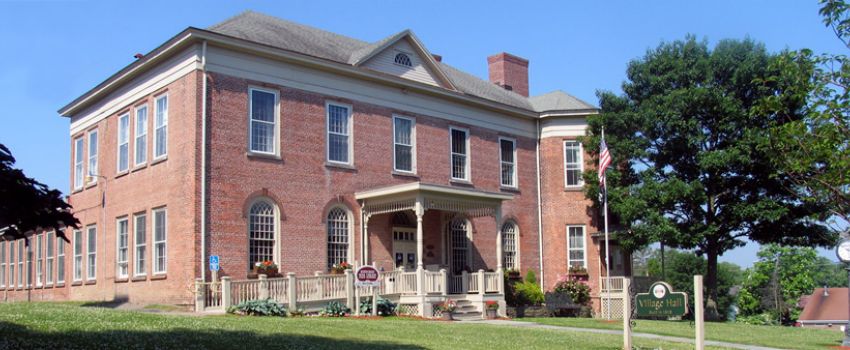

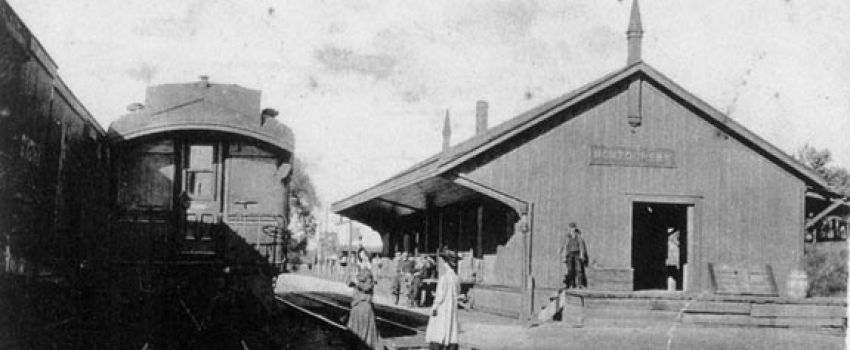




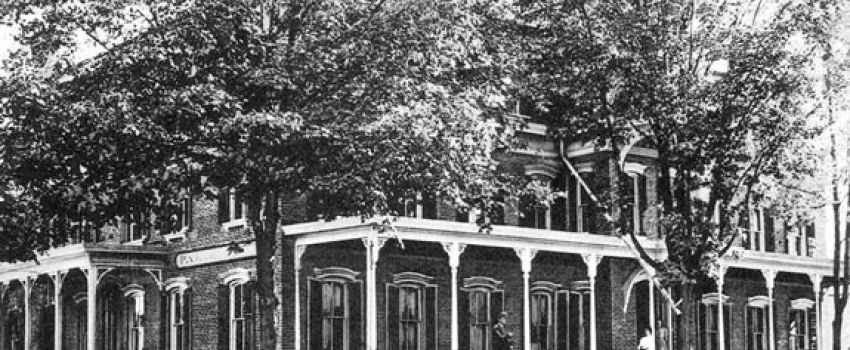
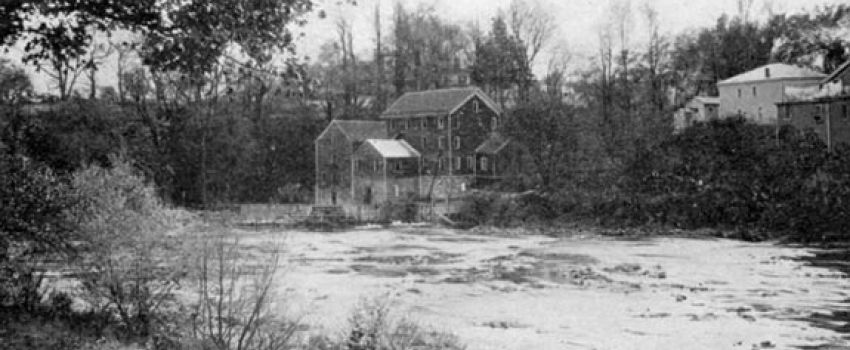



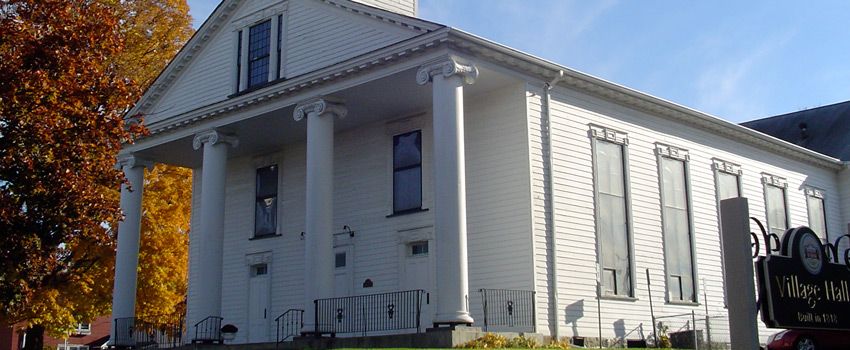
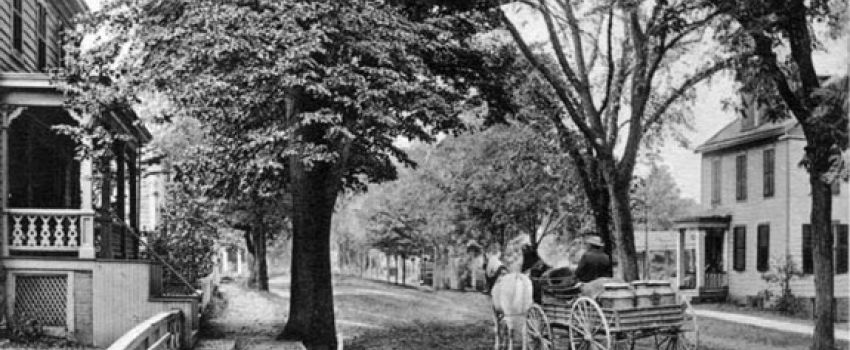
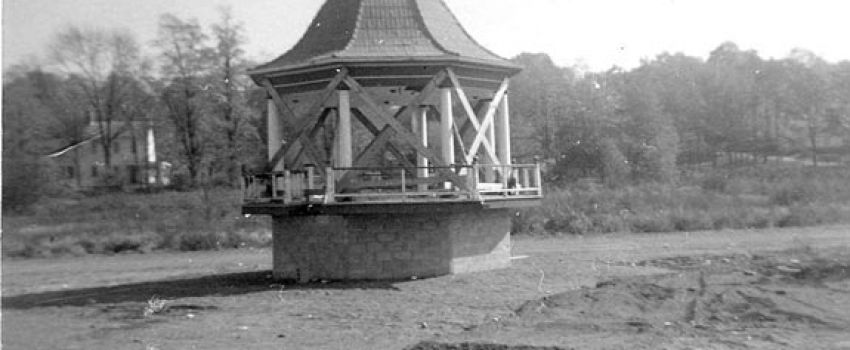
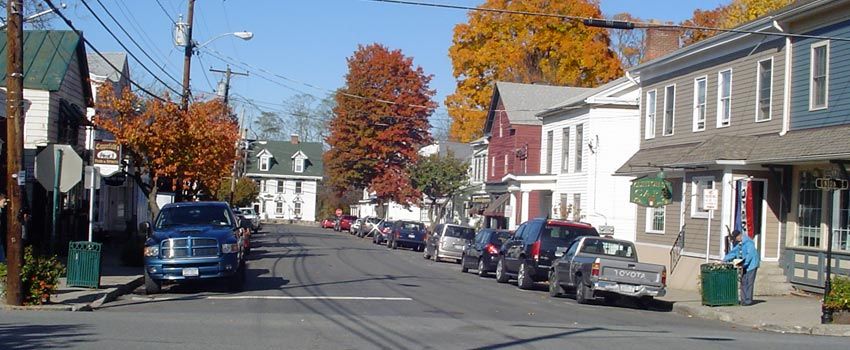


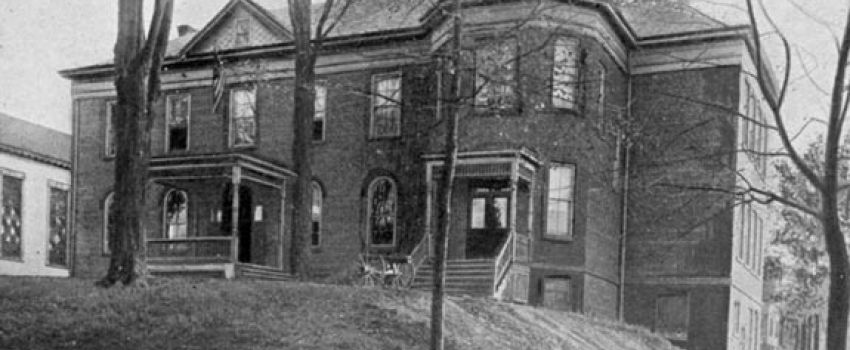
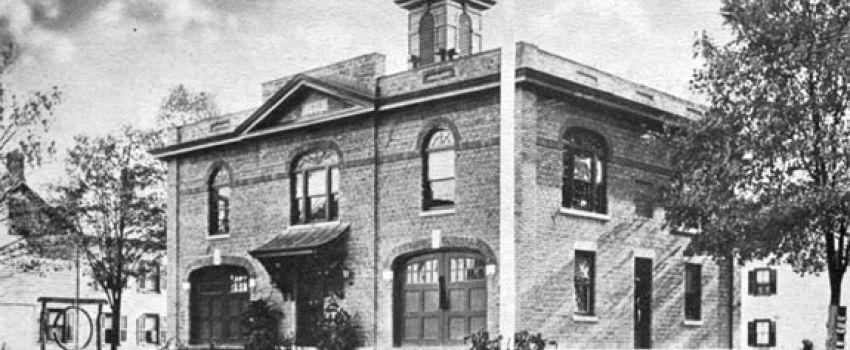
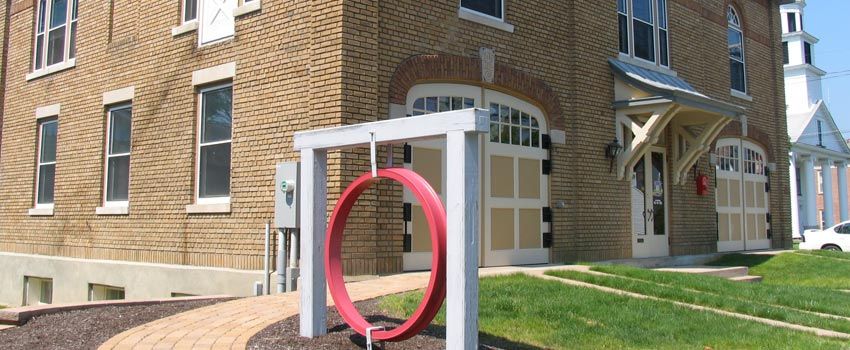
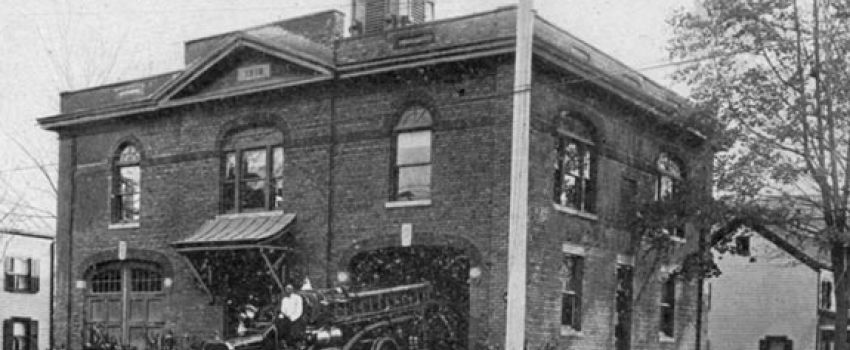
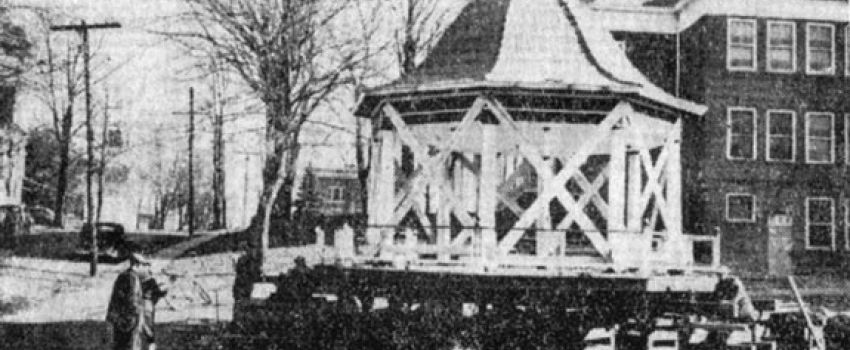

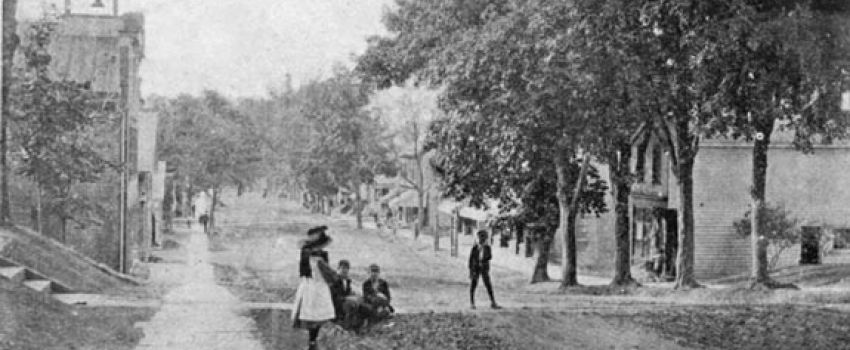



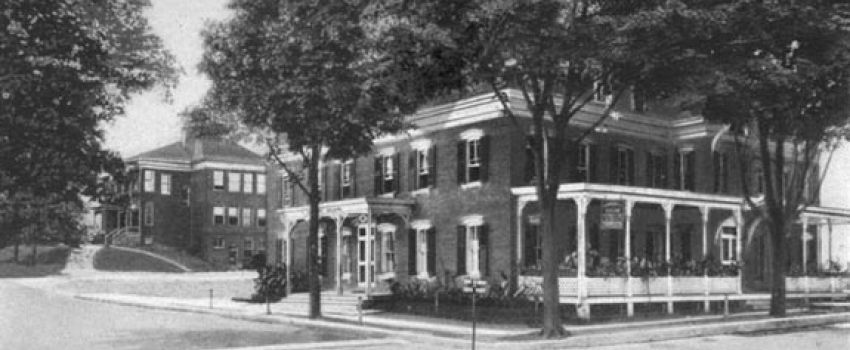

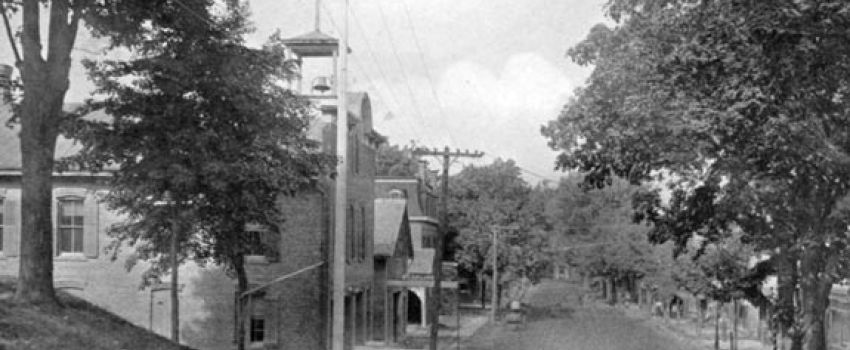

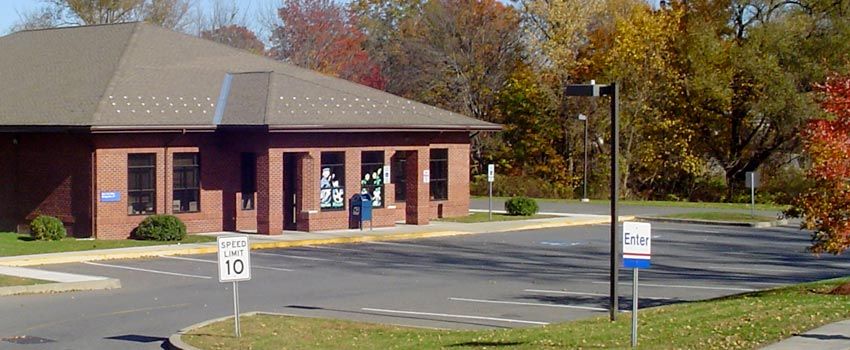


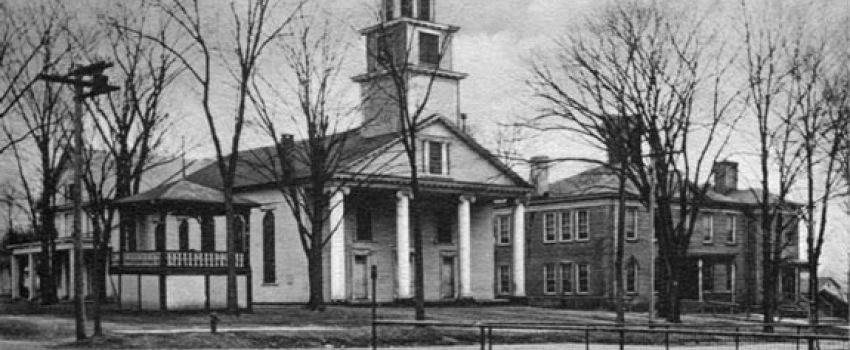
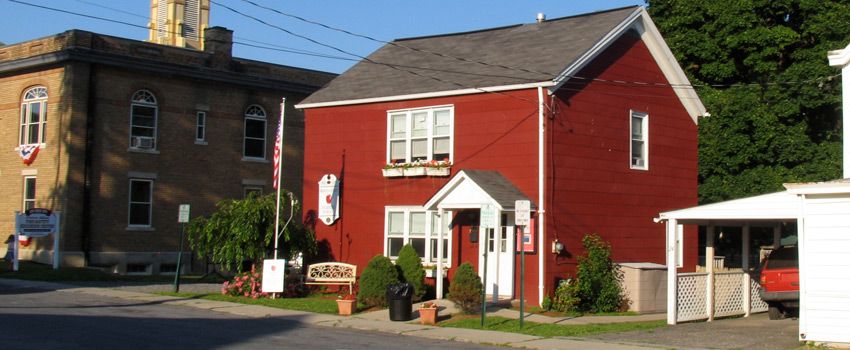
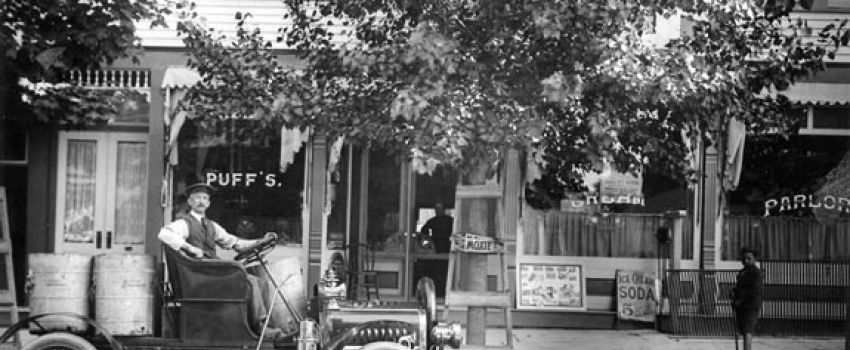

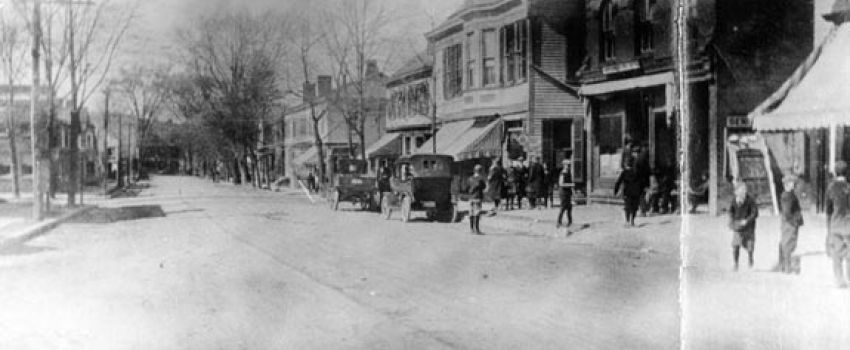

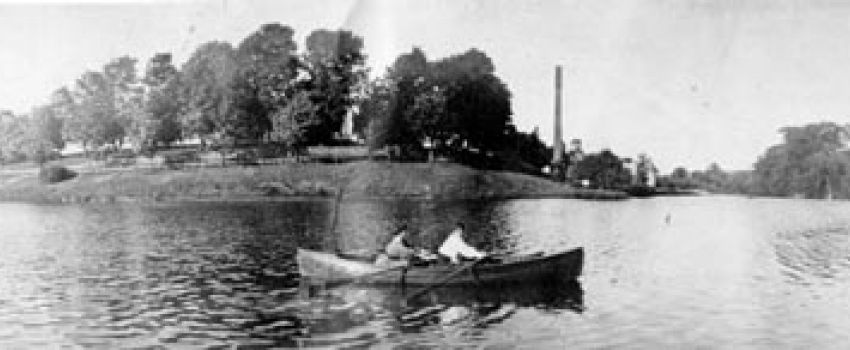

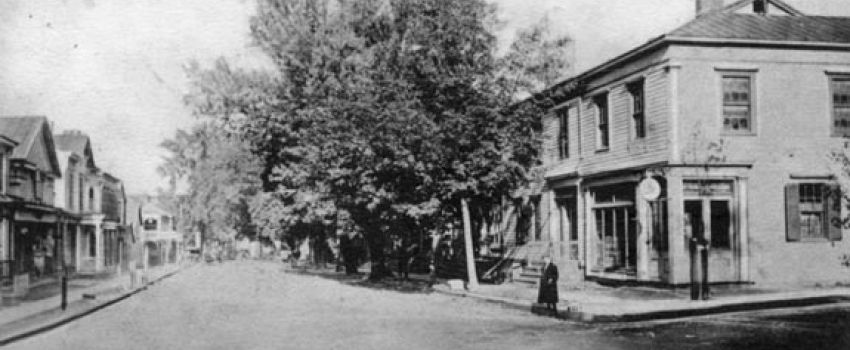
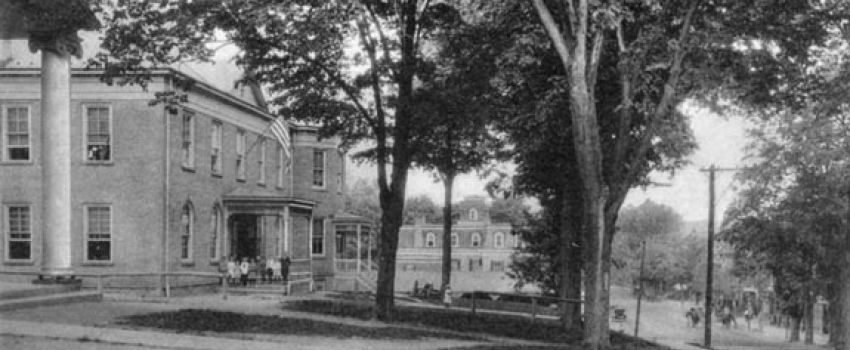

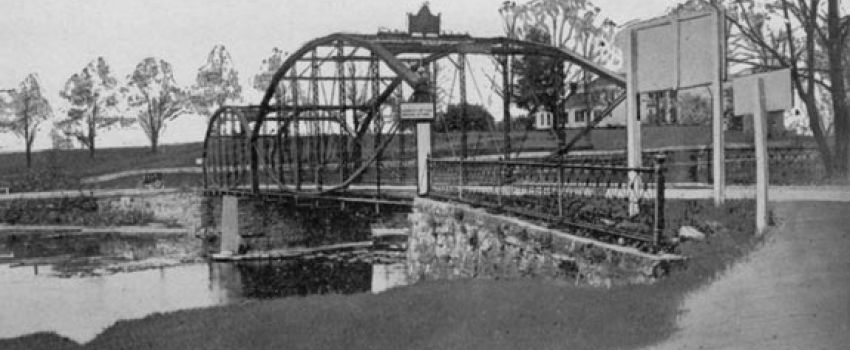
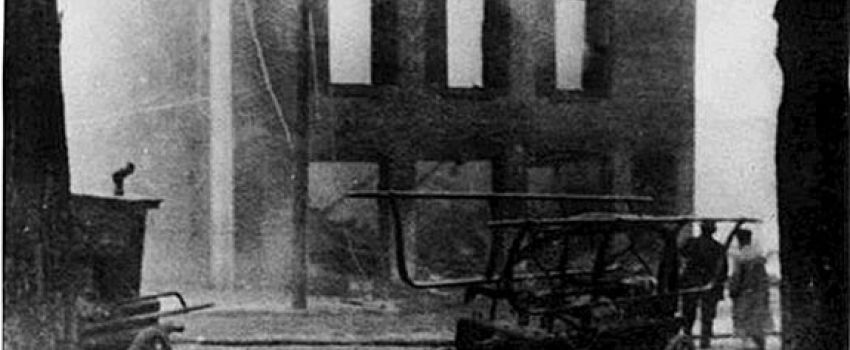

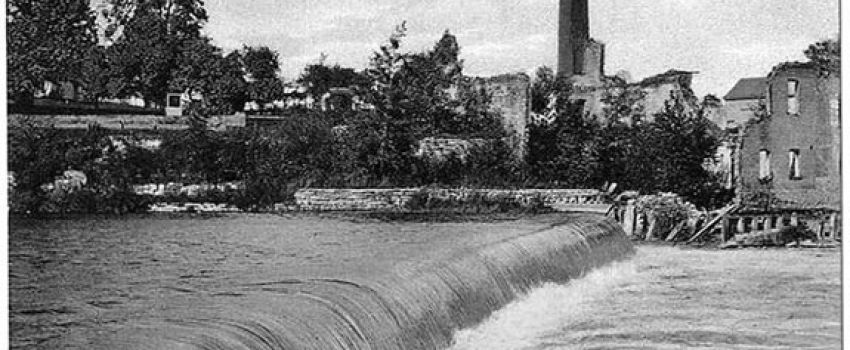

 Read full Article from midhudsonnews.com ~~~~~~~~ The governor also announced two $4.5 million New York Forward
Read full Article from midhudsonnews.com ~~~~~~~~ The governor also announced two $4.5 million New York Forward